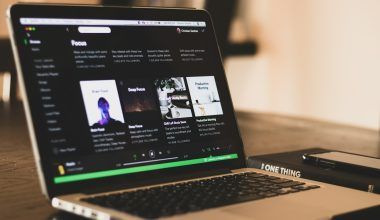In today’s music industry, you don’t need a big record label to share your music with the world. Thanks to technology and user-friendly platforms, independent artists can distribute their albums on all streaming platforms without a label. Whether you’re just starting or already have a few tracks under your belt, this guide will show you how to take control of your music career.
Why Go Independent?
Being an independent artist gives you freedom. You can make decisions about your music, branding, and career path without interference. Plus, you get to keep more of your earnings. While labels offer resources and connections, the modern music landscape provides tools that make it possible to succeed on your own.
If you’ve ever wondered how to distribute your album without a label, you’re in the right place. By the end of this guide, you’ll feel empowered to get your music on all major platforms and in front of listeners worldwide.
Step 1: Create High-Quality Music
Before you even think about distribution, ensure your album sounds professional. High-quality music is essential because it’s what keeps listeners coming back. Here’s what you need to focus on:
- Professional Recording: Invest in studio time or high-quality home recording equipment. Crisp and clear audio is non-negotiable.
- Mixing and Mastering: Don’t skip this step. Hire a professional or learn the skills yourself to give your tracks that polished, radio-ready sound.
Listeners can’t get enough of music that’s been carefully crafted, so don’t rush the production process.
Step 2: Choose a Digital Distribution Service
One of the most significant advantages of being independent is the variety of digital distribution services available. These platforms act as your gateway to streaming services like Spotify, Apple Music, Amazon Music, and more. Some popular options include:
- Delivermytune
- TuneCore
- CD Baby
- Ditto Music
Each service has its pros and cons, so compare them based on pricing, ease of use, and additional features. For example, some platforms charge an annual fee, while others take a percentage of your royalties.
Step 3: Prepare Your Album for Upload
Before uploading your album, you’ll need to gather some essential elements:
- Album Artwork: Eye-catching visuals help your music stand out. Make sure your artwork meets the platform’s specifications.
- Track Information: Include song titles, artist name, genre, and any featured collaborators.
- Metadata: This includes details like ISRC codes, release date, and lyrics (if applicable). Metadata ensures your music is properly credited.
Having everything ready will make the upload process smooth and stress-free.
Step 4: Set Your Release Strategy
Timing is everything when it comes to releasing music. Plan your release date and consider these tips:
- Pre-Save Campaigns: Many platforms allow fans to pre-save your album, building anticipation.
- Teasers and Previews: Share snippets on social media to generate buzz.
- Collaborations: Partner with influencers or fellow artists to reach a broader audience.
Strategic planning ensures your album doesn’t get lost in the sea of new releases.
Step 5: Distribute Your Album
Now comes the exciting part—uploading your album! Follow these steps for a successful launch:
- Log in to Your Chosen Distribution Platform: This is where you’ll upload your tracks and input all necessary information.
- Set Pricing and Territories: Decide whether your album will be available worldwide or in specific regions.
- Double-Check Everything: Ensure all details are accurate before hitting “publish.”
Once your album is live, it’ll appear on streaming platforms within a few days.
Step 6: Promote Your Album
Distribution is just the beginning. To ensure your music reaches as many ears as possible, you need a solid promotion strategy. Here’s how you can spread the word:
- Social Media: Post regularly about your release. Use platforms like Instagram, TikTok, and Twitter to connect with fans.
- Music Videos: A visually appealing video can boost engagement and shareability.
- Playlists: Pitch your songs to playlist curators. Being featured on a popular playlist can skyrocket your streams.
Promotion requires consistent effort, so stay active and creative.
Step 7: Track Your Performance
After your album is live, monitor its performance. Most distribution platforms provide analytics, showing you where your streams are coming from and which songs are the most popular. Use this data to refine your strategies and plan future releases.
- Fan Engagement: Interact with listeners who comment on your posts or share your music.
- Streaming Insights: Focus on the platforms where your music performs best.
Tracking your success helps you make informed decisions as you grow your music career.
Step 8: Keep Releasing Music
The more music you release, the more opportunities you have to attract fans. Consistency is key to building a loyal audience. Experiment with singles, EPs, and full albums to keep things fresh.
Final Thoughts
Distributing your album on all streaming platforms without a label is an achievable goal. With the right tools and strategies, you can reach listeners worldwide while maintaining control over your music. Remember to stay focused, invest in quality, and promote your work tirelessly. The path of an independent artist may require hard work, but the rewards are well worth it.
Related Articles:
For further reading, explore these related articles:
For additional resources on music marketing and distribution, visit DMT RECORDS PRIVATE LIMITED.






